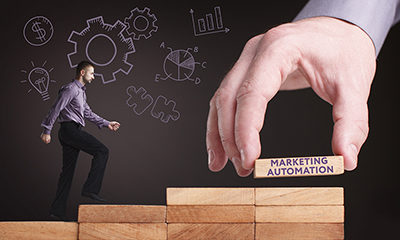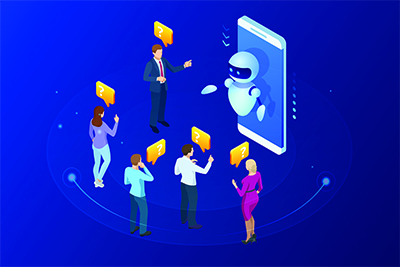You may be thinking that headline sounds like a discarded subtitle from one of the Terminator movies, and that’s not too far off-base. There can be an uneasy, even scary feeling about delegating tasks to a machine.
After all, that’s how it starts, isn’t it? You give a machine some simple tasks, it masters them, then it gets smarter, takes over all of our devices, learns how to do even more, disregards people as irrelevant, and the next thing we know, it’s Armageddon!
But before things veer down that path, marketing automation has become a useful way to leverage the vast amount of digital data out there. Marketers continue to find new and helpful methods in which to deploy automated tasks, so it doesn’t seem to be going anywhere any time soon.
What is Marketing Automation, Anyway?
It’s really what it sounds like. Automation uses software to handle certain, perhaps detailed tasks. The idea is to not only embrace a useful segment of MarTech (marketing technology) but to allow sales and marketing teams to focus more on other things. The software can process tons of information faster than humans can and deploy messages across multiple platforms to customers based on that data.
By capturing these mass amounts of user data, you can better analyze your customers’ behavior and target messages that cater directly to them on their devices at the right times. Automation can handle a lot of this, and quickly.
Research from HubSpot reveals some eye-opening automation facts and figures for this year:
- Automated email campaigns are one of the most popular tactics email marketers use to improve performance.
- 92% of agencies are investing more resources into integrating automation
- 68% of businesses already use automation in some form
Using Marketing Automation Today
Automation can be used to streamline many marketing duties and help segment audiences.
By handling a lot of this kind of legwork, your team can spend more time developing other campaigns and strategies. In addition to compiling data, some of the most common ways to use automation to communicate with customers include:
 Push Notifications – Subscribers to your blog or newsletter can get a notification on their device the instant new content is published. This helps your readers stay engaged.
Push Notifications – Subscribers to your blog or newsletter can get a notification on their device the instant new content is published. This helps your readers stay engaged.
Reminders and Notifications – Automation can handle these messages which are ideal and helpful for sending pre-, during-, and post-event information and updates.
Email – Like push notifications, automated emails are great for delivering new content and announcements to subscribers.
Customer Support – Chatbots have significantly reduced customers’ wait times on questions or concerns – many of which are common – and can be handled quickly.
The Next Phase for Automation
What’s next for automation? That’s hard to predict. But digital data is rapidly growing day by day, and automation is already proving it is a helpful tool – but that’s the key idea. It’s helpful; it doesn’t completely handle your marketing for you. Nor will it become self-aware and catalyze Judgement Day.
But with the rapid expansion of digital data and how to properly utilize it to deliver relevant messages to your audience, automation will continue to grow in new and beneficial ways.
As long as humans stay in control of it, that is.
